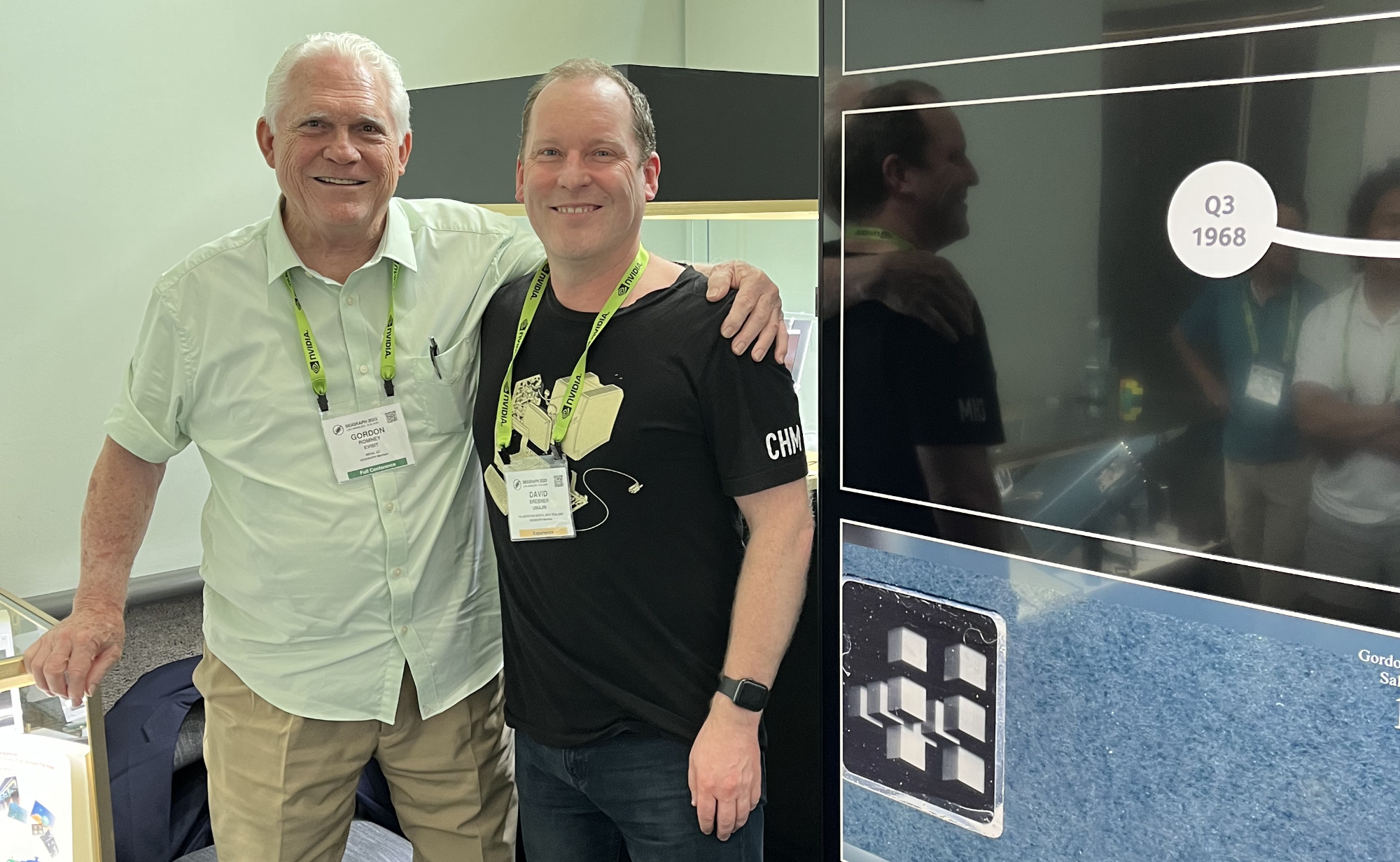SIGGRAPH 2023 is 50 years of SIGGRAPH. Amazing!
OpenUSD finally brings a standard for not just mesh and texture exchange but rich meta-data which is critical for the Digital Twin and VR training work we do;
OpenUSD
NVIDIA OpenUSD
www.nvidia.com/en-us/omniverse/usd
OpenUSD Alliance
We also had the Umajin XR showreel demonstrated by NVIDIA who keynoted the event.
I got to meet Gordon Romney at the show which was quite the honor and very inspiring. As a result I also got to talk with Ed Catmull and Jim Blinn who came to catch up with Gordon as they studied at the same lab in Utah. You might have heard the stories of Ed’s hand rendering animation and parametric representations including the Catmull spline, going on to form Pixar and head up Disney animation. Jim Blinn being famous for many breakthroughs in light rendering including the Blinn reflection model.
Gordon amazingly began his work at the Evans Computer Graphics Facility at the University of Utah before Ed and Jim joined the program. Gordon’s first rendered 3D images of a SOMA cube projected in 3D were composited using an oscilloscope to expose photographic paper and build up an RGB image! These were the first computer graphics renderings in color.
Here is a quote from Gordon which truly shows how fundamental this initial work was;
“Although I had built my first analog computer to simulate a moon shot in 1958 I had used a digital computer for the first time only the year before, in 1964, on my Princeton thesis [Thermoluminescence of KI, measuring emitted photons]. The digital computer age was then in its infancy and I was intrigued with computers. As a research assistant at Princeton in Physics, I had created solid state particle detectors that could perceive invisible elementary particle photons of light. Now I worked to create virtual images of real-life objects inside a computer memory to be shown in a visible format to a human. I used the word “rendering” in a computer context to describe this process. Virtual objects were rendered in a way that a human could “see” the object as though it were a real, solid object. Here was a chance to combine both of my professional passions — Light and Computers!”
Evans’ vision dealt with producing realistic, digital 3D images of virtual objects using raster scan technology (similar to that used in TVs). This challenge he presented to Gordon, his first Ph.D. student in computer graphics with a first solution within one year. Technology was limited, however, and Gordon was given a Univac 1108 (pre-FASTRAND mass storage version), card reader, and line printer as his tools. The contribution of four significant team members, who studied and performed graphics research between the years of 1965 and 1978 were Romney and Alan Erdahl at the “Beginning.” Then Edwin Catmull produced the first “Animation” of a life-like form, the hand. James Blinn constantly sought “Realism” in the 3D images rendered.
Absolutely amazing. It was great to talk with Gordon and to explore some of the fascinating work that was needed to even begin the task of “rendering” and then to find our more about all the other contributions to computer science, commerce and cyber security he was responsible for advancing.

Cheers
David